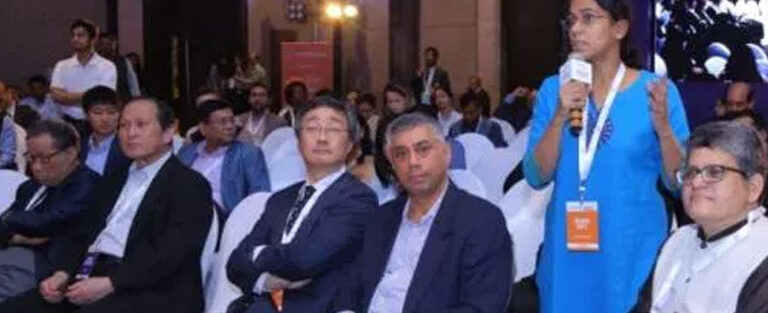( Excerpts from the track on Future of Food at the 9th Sankalp Global Summit held in December 2017)
The act of feeding the global population puts more stress on the planet than any other activity. As diets shift to be more resource intensive and populations grow, were running out of resources to feed ourselves sustainably. What does the future hold?
The 9th Sankalp Summit, held in India on December 7-8, explored how we can pivot from an era of scarcity to an era of abundance. The track on Future of Food brought together key stakeholders across the food value chain including farmers, research institutions, investors and industry to share their views on challenges and key enablers. The track explored how we can secure the incomes of farmers and lay the groundwork for a more stable food future.
Where things stand today
The facts are staggering, 200,000+ new mouths need to be fed every day in a time when every 1 degree rise in temperature during farming season results in a 10 percent loss of yield. Only 55 percent of the worldwide agri-produce is used for human consumption out of which 1/3rd is wasted.
Since agriculture is a significant contributor to the green-house effect, managing it well plays a critical role in climate change mitigation. It is imperative for farmers, research institutes and businesses to work in tandem to create a sustainable system for feeding the growing population in any country. There is a role that each stakeholder in the value chain can play individually and in collaboration with others to keep pace with rapidly evolving consumer and producer needs. Sankalp Speaker, Herman Brouwer, Senior Advisor for Development Innovation, Wageningen University & Research emphasized this point given his experience in the Netherlands: The Netherlands is actually one of the most climatically unsuitable countries for agriculture, but it has achieved tremendous success in the field only because of close collaboration between farmers, research institutions and businesses.
There is potential to plug in the gaps existing across the value chain pertaining to the diverse spread of agro-climatic conditions, terrain and cropping patterns across, it is viable for multiple solutions and enterprises to exist and work towards area-specific problems.
The challenges are great, but innovation is percolating in many corners. We are currently witnessing the best period for agriculture across the world, with some of the sharpest minds from diverse backgrounds jumping into the sector to tackle its most formidable problems, said Hemendra Mathur, Venture Partner, Bharat Innovations Fund.
In India, there are approximately 250-300 entrepreneurs from diverse backgrounds trying to bring in innovative solutions. Access to data and information, is enabling this innovation. Entrepreneurs are also leveraging technology to achieve scale faster, introduce new solutions and build profitable enterprises. Due to the inadequate performance of various assistance schemes for the sector, farming communities have also become more accepting of new practices and suggestions which can help achieve faster uptake in the particular district or region.
Can we keep farmers in farming?
More than 1 billion smallholder farmers, almost all in the developing world, grow 70 percent of the food consumed each year. Yet, they are trapped in vicious cycles of low profitability of farming, depleting assets, and indebtedness that result in high instability and vulnerability. The implications are extreme in some cases: approximately 2,000 farmers leave farming for more lucrative opportunities every day in India. 10,000+ farmer suicides were officially reported between 2010 and 2015 in India. The phenomenon is not just restricted to the developing world. The numbers of farmers in Europe have come down from approximately 150,000 to 90,000 in past few years owing to dwindling profitability within the sector.
Recently, young CEOs convened under the Champions of Change program by Niti Aayog in India focused on securing farm yields, securing markets and fair prices, creating a social and economic safety net for distressed farmers and implementing sustainable smallholder farming practices to reduce resource usage. Some important suggestions that Sankalp speakers brought to the table included better managing water scarcity and retaining adequate moisture in soils; taking innovative crop varieties from laboratories to smallholder farmers; managing methane emissions, using carbon more judiciously, tackling markets and finance for farmers.
Moreover, solutions for smallholder farmers lie in their aggregation and public good expenditure by the government. There is also growing need to make smallholder farmers aware of sustainable farming practices as they form a major part of the farming community across the world. In nature, there are no wars, no profit or loss, there is co-existence and balance of giving and receiving. People will have to adopt these principles of nature and work with them, concluded Prem Singh, a progressive Farmer, Founder, Manveeya Shiksha Sansthan.




